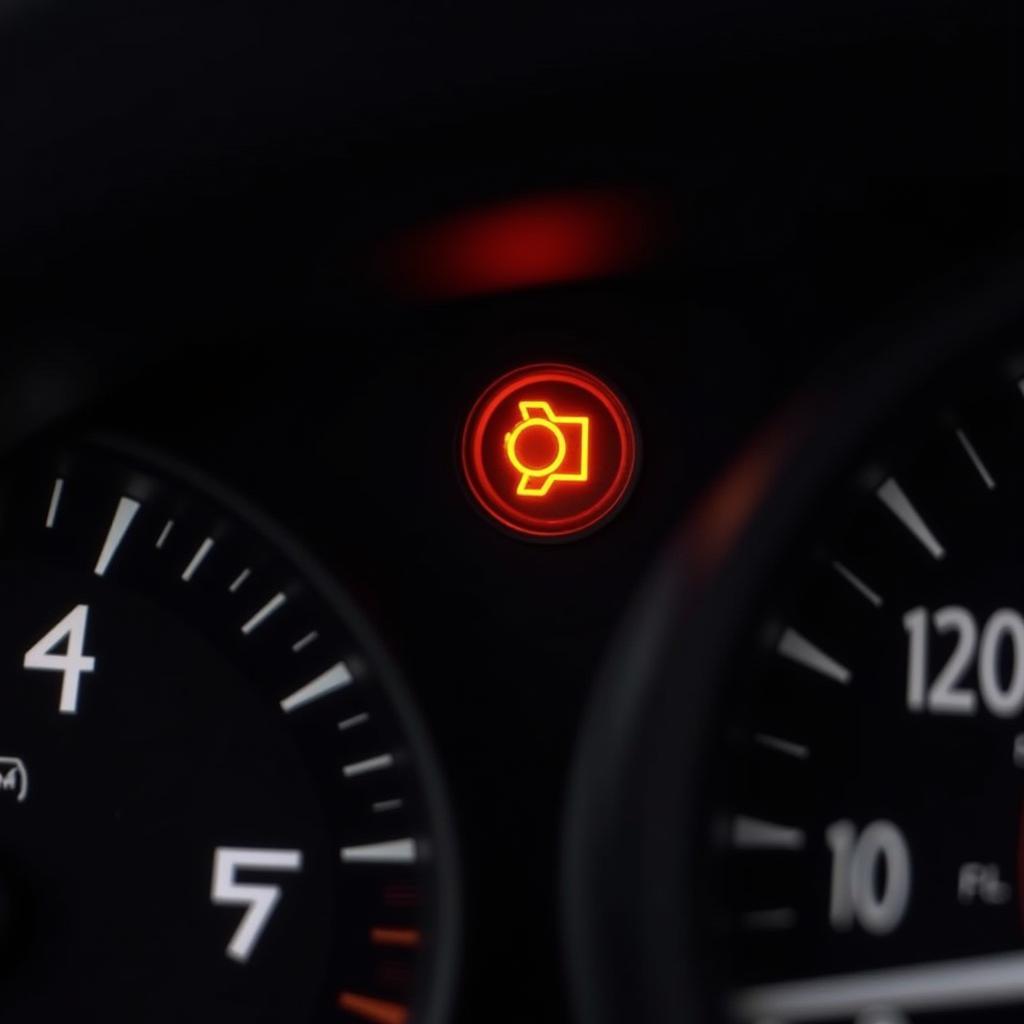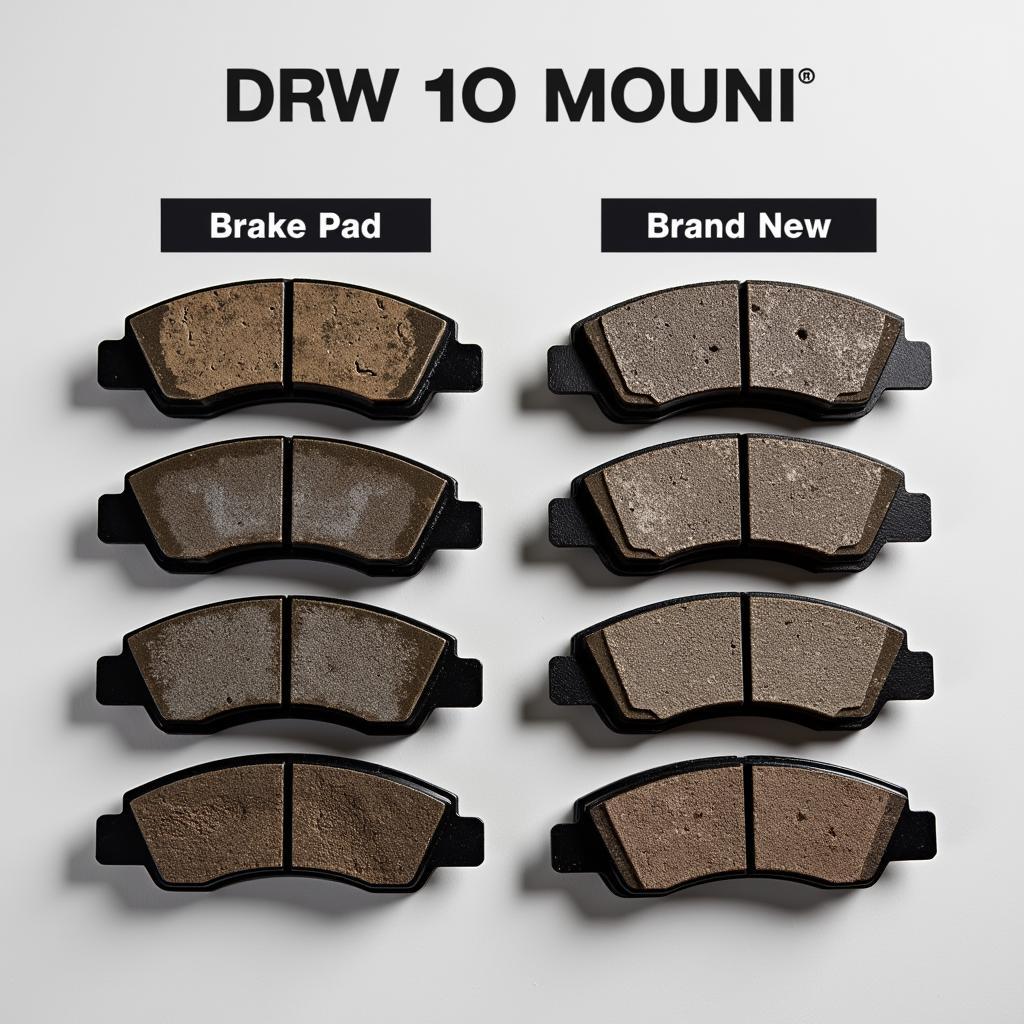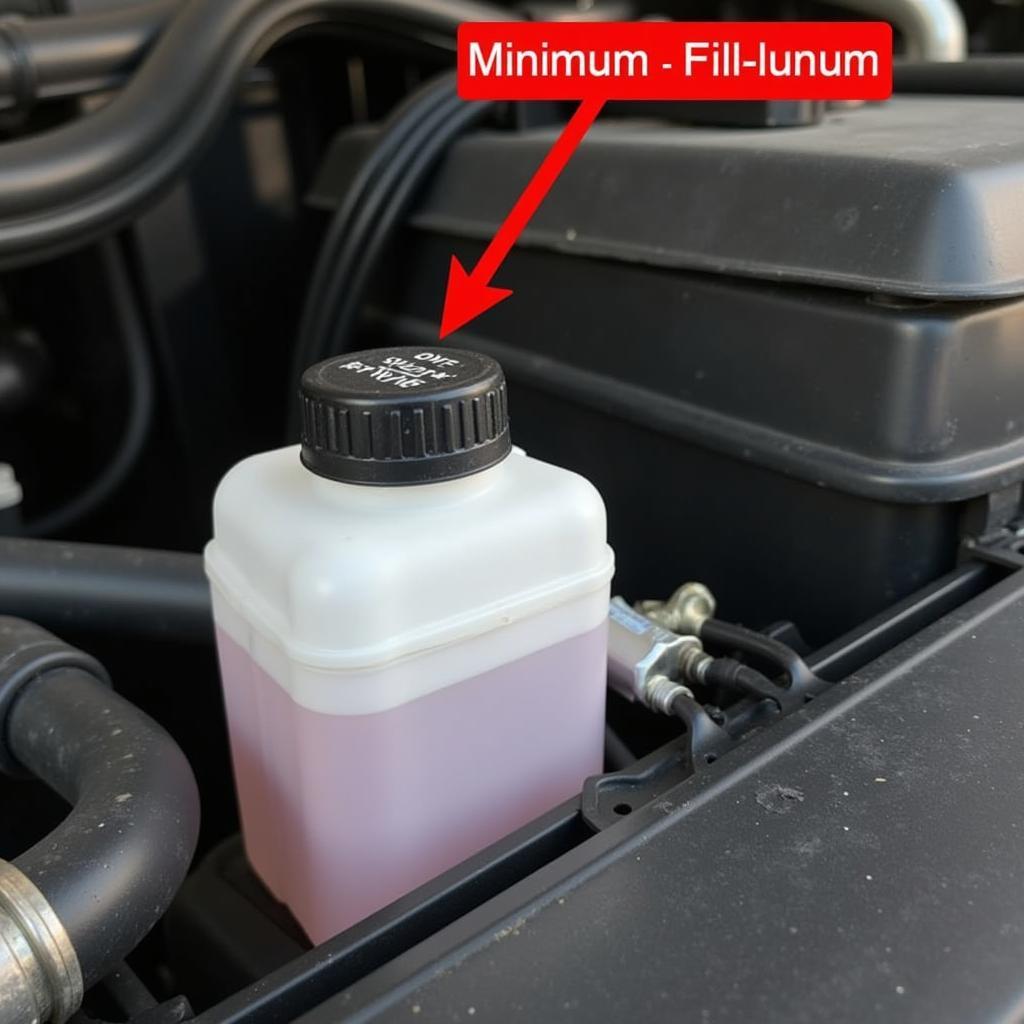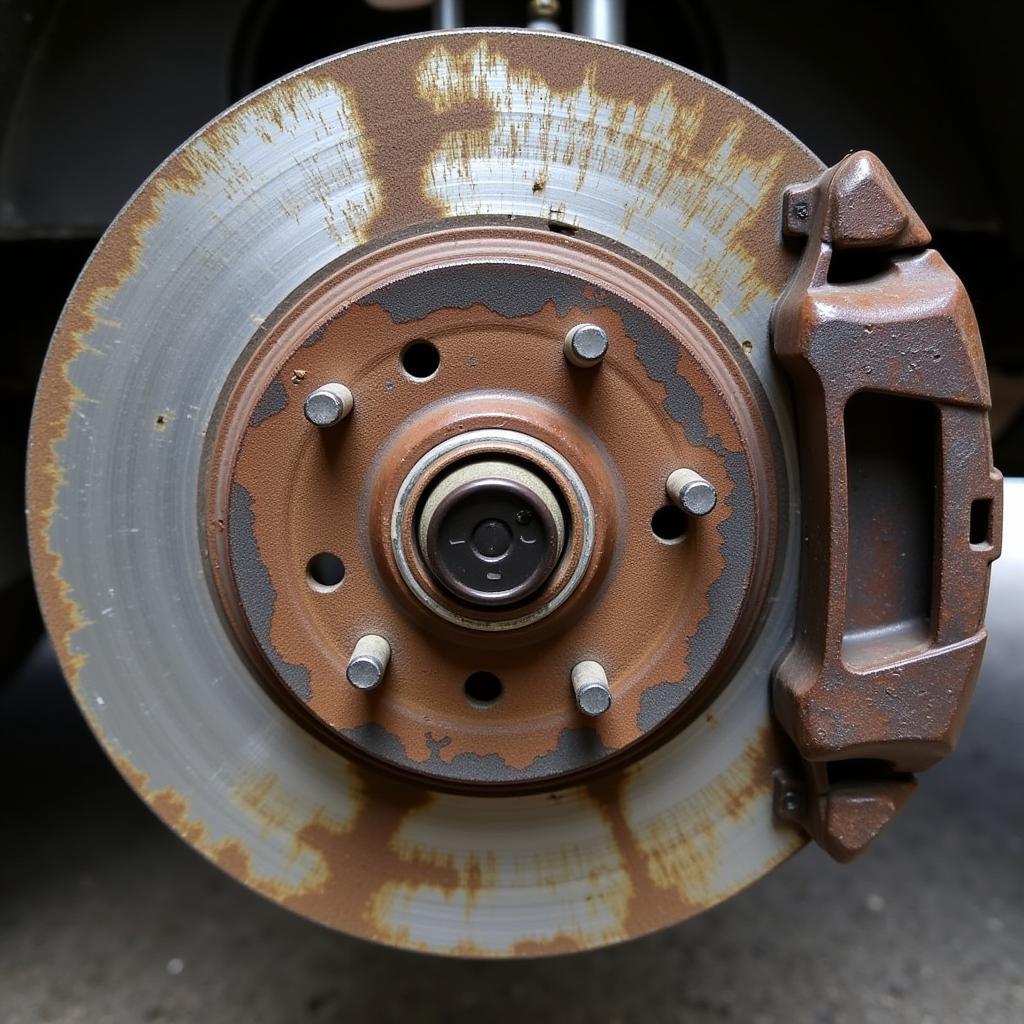Driving with the brake pad warning light on is a risk you shouldn’t take. This light means your brake pads have worn down past a safe point, and continuing to drive will compromise your braking ability, putting you and others in danger.
 Brake Pad Warning Light on Dashboard
Brake Pad Warning Light on Dashboard
Understanding the Brake Pad Warning Light
Most vehicles have a sensor embedded in the brake pads that triggers the warning light on your dashboard. This light, often a circle with an exclamation mark inside or the word “BRAKE,” signals that your brake pads require immediate attention.
Ignoring this warning light can lead to:
- Reduced braking power: Worn brake pads mean less friction material to stop your car, significantly increasing your stopping distance.
- Damage to rotors: Driving with worn pads can cause metal-on-metal contact, damaging your brake rotors, which are much more expensive to replace.
- Complete brake failure: In extreme cases, ignoring the warning can lead to complete brake failure, putting you at serious risk of an accident.
So, How Long Can You Drive?
The short answer is: You shouldn’t drive at all with the brake pad warning light on. Instead, you should:
- Pull over safely: Find a safe location to stop as soon as possible.
- Check your brake fluid: Low brake fluid can also trigger the warning light. Ensure the fluid level is within the recommended range.
- Call for assistance: If you’re uncomfortable driving with the warning light on, call a tow truck or a trusted mechanic.
Factors Affecting Brake Pad Lifespan
Several factors influence how long your brake pads last, including:
- Driving habits: Aggressive driving with frequent hard braking wears down pads faster.
- Vehicle type and weight: Heavier vehicles and those used for towing put more strain on brakes.
- Brake pad quality: Higher quality brake pads generally last longer.
- Driving conditions: City driving with frequent stops and starts wears down pads faster than highway driving.
What to Expect When Replacing Brake Pads
Replacing brake pads is a standard maintenance procedure. Here’s what usually happens:
- Inspection: A mechanic will inspect your entire braking system, including rotors, calipers, and brake lines.
- Pad replacement: The old pads are removed, and new ones are installed.
- Rotor resurfacing or replacement: If the rotors are damaged, they’ll be resurfaced or replaced.
- Brake fluid flush: It’s a good idea to have your brake fluid flushed and replaced periodically.
 Worn Brake Pads Next to New Ones
Worn Brake Pads Next to New Ones
Don’t Ignore the Warning!
Remember, your brakes are crucial for your safety. Ignoring the brake pad warning light is dangerous and can lead to costly repairs. Schedule an inspection with a qualified mechanic as soon as the light comes on to ensure your safety on the road.
FAQs
Q: Can I just add brake fluid if the warning light is on?
A: While low brake fluid can trigger the warning light, it’s crucial to identify the underlying cause. Simply adding fluid without addressing the root issue, like worn pads, won’t solve the problem and could be dangerous.
Q: How much does it cost to replace brake pads?
A: The cost varies depending on your vehicle make and model, the quality of the brake pads, and labor costs in your area.
Q: How often should I get my brakes checked?
A: It’s recommended to have your brakes inspected at least once a year or every 12,000 miles, even if you haven’t noticed any issues.
Q: Can I replace my brake pads myself?
A: While possible, replacing brake pads requires mechanical knowledge and specialized tools. It’s recommended to have a professional handle brake work to ensure it’s done correctly.
Q: What are some signs of worn brake pads besides the warning light?
A: Other signs include squealing or grinding noises when braking, vibrations in the brake pedal, and a longer stopping distance.
Did you find this information helpful? You may also be interested in learning about specific brake warning light issues for different car models:
- Audi Q3 brake warning light
- 2017 Honda HRV brake system warning light
- 2014 Chevy Malibu brake warning light
Remember, timely brake maintenance is crucial for your safety on the road! Don’t delay getting your brakes checked if you suspect any issues.


